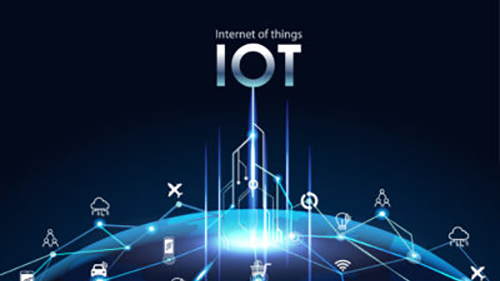Industrial IoT: How Connected Things Are Changing Manufacturing
Robert Schmid, Chief Technologist, IoT, Deloitte Digital
he proliferation of smart things has reached critical mass. Products with wireless connectivity (from lightbulbs to thermostats to smart speakers) are more present in people’s homes today than not—one report suggests that 79 percent of U.S. consumers have at least one connected device at home. But the technology actually has its roots in a world that predates the rise of remote control thermostats: industrial manufacturing.
The Industrial Internet of Things (IIoT) takes networked sensors and intelligent devices and puts those technologies to use directly on the manufacturing floor, collecting data to drive artificial intelligence and predictive analytics.
“In IIoT technology, sensors are attached to physical assets,” says Robert Schmid, Deloitte Digital IoT chief technologist. “Those sensors gather data, store it wirelessly, and use analytics and machine learning to take some kind of action.”
The IIoT is driving unprecedented disruption in an industry that has struggled in recent years due to talent shortages, and this offers hope for the industry’s future. The IIoT can transform traditional, linear manufacturing supply chains into dynamic, interconnected systems—a digital supply network (DSN)—that can more readily incorporate ecosystem partners. As key enablers of DSNs, IIoT technologies help to change the way that products are made and delivered, making factories more efficient, ensuring better safety for human operators, and, in some cases, saving millions of dollars.
The Power of Prediction
One of the greatest benefits of the IIoT is how it can dramatically improve operating efficiencies. If a machine goes down, for example, connected sensors can automatically pinpoint where the issue is occurring and trigger a service request. Perhaps more importantly, the IIoT can also help a manufacturer predict when a machine will likely breakdown or enter a dangerous operating condition before it ever happens.
“Predictive maintenance is a big thing,” says Schmid. “This lets us limit equipment downtime and improve safety by being proactive about a fix.”
The sensors work by analyzing the sound frequencies, vibrations, and temperature of a given machine to tell if it’s working within its normal condition. This process—known as condition monitoring—is time intensive when humans do it manually. By using sensors to collect and quickly analyze data points in the cloud, prediction becomes easier.
Schmid cites a client that makes packaging materials as a great use case for the prediction capability of connected sensors. When the company outfitted its production equipment with IIoT sensors, overall equipment effectiveness (OEE) improved by nine percent. The heightened OEE decreased waste for the company by predicting when machines would need to be maintained before they failed and had to be taken out of service. By decreasing machine downtime, Schmid says the company was able to take better advantage of the factory’s capacity.
“Thanks to the predictive nature of the sensors, the company avoided building another production line, which helped them save $25 million in added capital expenditures,” he says.
Beyond saving money and time, the IIoT can keep workers safe. If an oil well is about to reach a dangerous pressure condition, for example, operators will be warned well before it explodes. Sensors can even be used to manage and monitor workers’ locations in case of an emergency or evacuation.

Location, Location, Location
Another huge benefit of the IIoT is location tracking—the industrial version of a connected fob that makes your keys impossible to lose. Workers can spend a lot of time locating tools, equipment, and finished goods inventory, but the IIoT reduces that time significantly.
“When equipment is built, it goes onto a massive inventory lot that could be three quarters of a mile on each side,” says Schmid. Simply finding equipment on the lot is so time consuming that one of Schmid’s clients saved $3 million per year on each of its production lines once the company’s equipment was outfitted with location-tracking sensors.
Dr. Richard Soley, executive director for the Industrial Internet Consortium (IIC), which works to test and promote the IIoT, has come across similar findings with his clients. Dr. Soley’s group works primarily through “testbeds”—experimental technology implementations designed to measure how well the technologies really work. One of the IIC’s testbeds involved a client with a massive number of tools that kept getting misplaced.
“The client found that its workers spent 47 percent of their time just looking for the right tools,” Dr. Soley says. “But with an IIoT solution, the worker could be told that the tool they needed was 10 meters behind them and to the left.”
This also meant that the workers didn’t have to spend time putting the tool back where it belonged. Thanks to the sensors, the system will always know where the tool is and will tell workers where to find it.
The IIoT and the Leasing Model
While the IIoT is already boosting efficiency, productivity, and safety, the future of the IIoT could disrupt enterprise business models, too. Schmid believes that in the near future we could see the proliferation of high-value equipment—ranging from manufacturing robots to aircraft engines—being leased instead of being sold outright.
“Rather than sell equipment directly, the equipment can be outfitted with built-in sensors and marketed as both a product and a service, where the owner monitors the equipment remotely and delivers maintenance, repairs, and upgrades automatically,” Schmid says.
This will allow manufacturing companies to focus on the work at hand instead of worrying about the condition of the equipment that they use to do it, further increasing productivity and efficiency even.
As the manufacturing industry continues to adopt IIoT technology, these results provide a clear business case—far beyond the sensors that anticipate (and accommodate) or arrival home.
This story was produced by the WIRED Brand Lab for Deloitte Digital.



